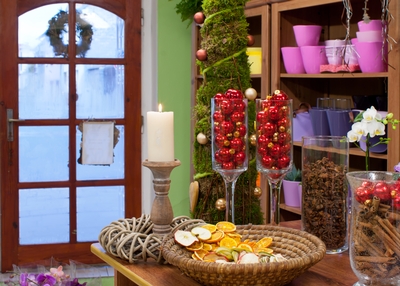It had to happen: Some tech entrepreneur developed a smartphone app that not only shows individual store floor plans, but also, when interacting with other apps, will re-create your shopping list in the form of a store map, routing you to the best and fastest way to hunt and gather.
And it’s all in the guise of great – and differentiated – customer service.
 Hmmm: We beg to differ.
Hmmm: We beg to differ.
For those in a hurry to amass food and other products, this kind of mapping makes sense. After all, who’s got time (chefs excluded) to slowly examine a head of Boston lettuce or closely scrutinize the freshness of leeks? Even consumer goods, like Nike shoes or a Tahari sheath, can easily be plucked from their shelves or hangers when armed with a retail planner.
It’s also a boon for in-store pick-up, when you don’t have the bandwidth to putter or truly shop for the item you want.
Wait. Isn’t retail all about visual cues, enticing us to stop, look, and handle – and dream? What ever happened to the thrill of discovering, say, a new kind of organic snack or an out-of-the-world designer label while meandering through a confusing store layout? Even brick-and-mortar bookstores, of which there are all too few, beg us to wander and browse, read a few pages, and fall in “like” with an author. We can always order e-books. But not discover a different writer or illustrator or magazine editor.
Sure, we’re all about navigational signals when we need to get somewhere – a corporate strategy, business goals, even directions to off- and in-sites. Yet even when we’re so inclined to go straight and not deviate, isn’t there something infinitely human about getting lost?

